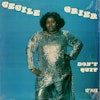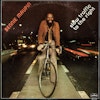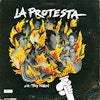To the average neighborhood bully, this is the stuff of dreams. Each of Cecile Grier’s children can attest—it was not uncommon to disembark the school bus, only to be bombarded by their mother’s modern-soul oddity, “Don’t Quit.” “They’d be waiting for us,” recalls Lajuan Simmons. “They’d have the speakers in the window, turned all the way up—and they’d just start blasting it.” The prank’s intended target was primarily older sister Lana, who made her short-but-sweet kindergarten rap debut in the single’s opening stanzas. Playground lampooning aside, history, coupled with the European record market, has proven that Cecile Grier’s musical legacy is no laughing matter. “You can go to Staten Island, and people still know that record,” remarks Lajuan, who as Lotanerv has expanded the family business to include rap. “I had a mailman stop me about a year ago like, ‘You got to be a Simmons! You look just like your mother! And I still got that record!’”
“I guess the people at the post office do know me, ’cause I did a lot of shipping!” adds Cecile Simmons (née Grier), who, with her husband Leslie, comprised the entire LesLan Records staff. Named for firstborn Leslie Jr. and Lana, the label’s lone release made its initial splash in East Coast record pools, rippling down to DJs and independent retailers from New York to Florida. “Record pools used to call me up frantically—‘You didn’t send me those—how could you forget about me?’ And I’m like, ‘Who are you?’”
Recorded at Blank Tapes in Manhattan, the sonic texture of “Don’t Quit” is consistent with left-field triumphs by studio alums Arthur Russell and Patrick Adams, while compositionally more comparable to skate-savvy productions by Jimmy Jam and Terry Lewis. With the vocal reverb set to Diva, producer Roger S. Keay laid a generous foundation of feverishly panned drum programming, latticed by synthetic strands of cascading harpsichord and faux pan flute. In the eleventh hour, Eddie Van Halen’s stunt double performs the guitar solo from “Beat It” atop Frankie Smith’s “Double Dutch Bus.” Beat Street for the music, Sesame Street for the message, positivity prevails on this home-cooked ode to persistence. On the back cover, Lana gets special thanks for doing the rap so well. “We’ll go far together,” the author assures.
Cecile remains involved in music, writing and singing, and continuing to foster the careers of her children. “My goal is to constantly help others; that’s what I was born to do,” concludes Cecile. “And if I can do it in a song, then that’s what I’m going to do.”


